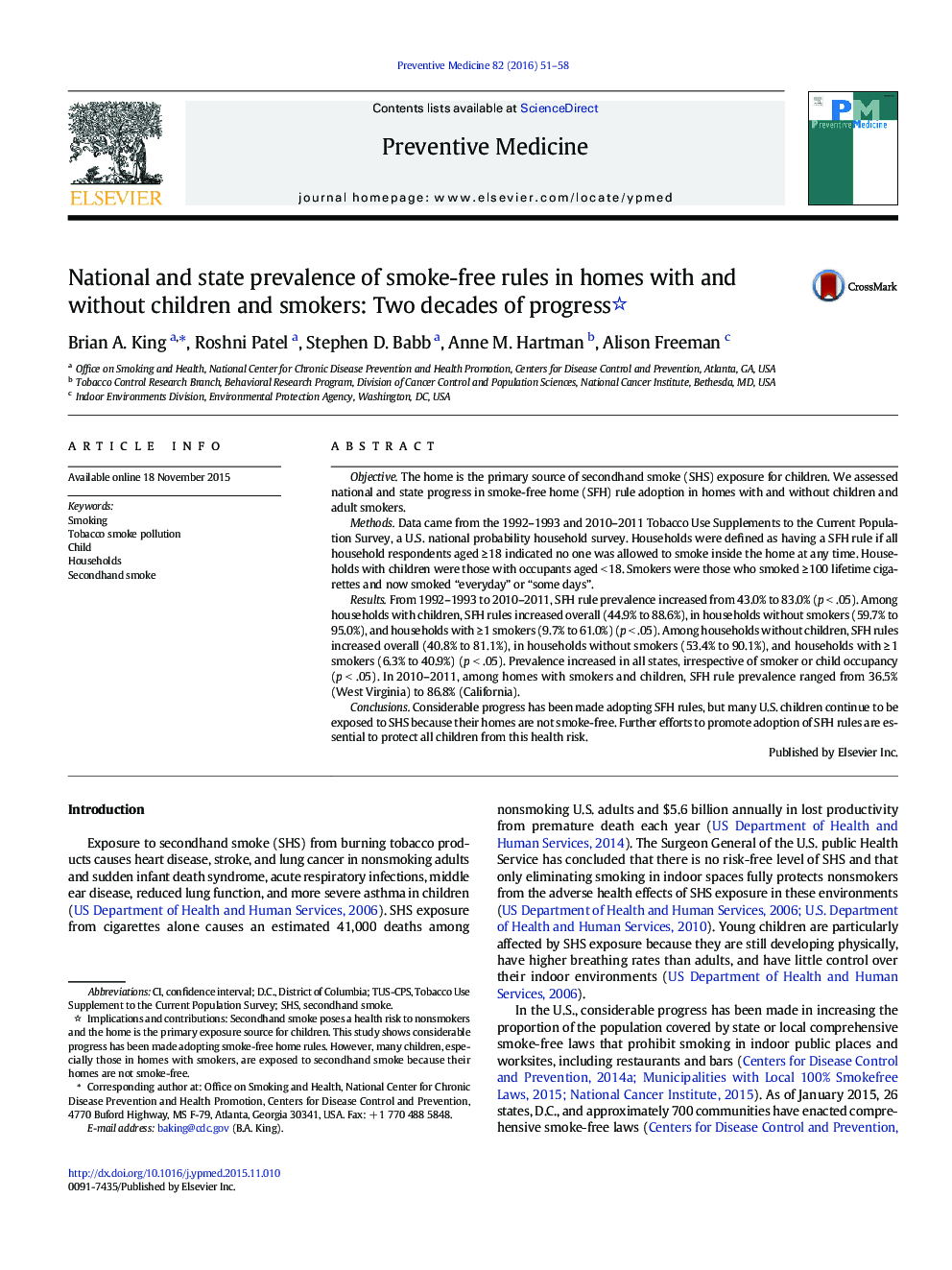| کد مقاله | کد نشریه | سال انتشار | مقاله انگلیسی | نسخه تمام متن |
|---|---|---|---|---|
| 6046318 | 1581632 | 2016 | 8 صفحه PDF | دانلود رایگان |

- We assessed smoke-free home rules in homes with and without children and smokers.
- From 1992-1993 to 2010-2011, smoke-free home rules increased from 43.0% to 83.0%.
- In 2010-2011, 61.0% of homes with children and smokers had smoke-free rules.
- In 2010-2011, in homes with smokers and children, state rules ranged from 36.5% to 86.8%.
- Progress has been made with smoke-free homes, but many children are still exposed.
ObjectiveThe home is the primary source of secondhand smoke (SHS) exposure for children. We assessed national and state progress in smoke-free home (SFH) rule adoption in homes with and without children and adult smokers.MethodsData came from the 1992-1993 and 2010-2011 Tobacco Use Supplements to the Current Population Survey, a U.S. national probability household survey. Households were defined as having a SFH rule if all household respondents aged â¥Â 18 indicated no one was allowed to smoke inside the home at any time. Households with children were those with occupants aged < 18. Smokers were those who smoked â¥Â 100 lifetime cigarettes and now smoked “everyday” or “some days”.ResultsFrom 1992-1993 to 2010-2011, SFH rule prevalence increased from 43.0% to 83.0% (p < .05). Among households with children, SFH rules increased overall (44.9% to 88.6%), in households without smokers (59.7% to 95.0%), and households with â¥Â 1 smokers (9.7% to 61.0%) (p < .05). Among households without children, SFH rules increased overall (40.8% to 81.1%), in households without smokers (53.4% to 90.1%), and households with â¥Â 1 smokers (6.3% to 40.9%) (p < .05). Prevalence increased in all states, irrespective of smoker or child occupancy (p < .05). In 2010-2011, among homes with smokers and children, SFH rule prevalence ranged from 36.5% (West Virginia) to 86.8% (California).ConclusionsConsiderable progress has been made adopting SFH rules, but many U.S. children continue to be exposed to SHS because their homes are not smoke-free. Further efforts to promote adoption of SFH rules are essential to protect all children from this health risk.
Journal: Preventive Medicine - Volume 82, January 2016, Pages 51-58